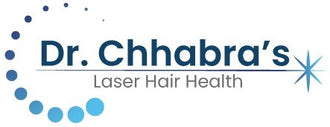Introduction
Hair growth and hair fall are natural processes that everyone experiences. While some people enjoy thick, healthy hair, others struggle with excessive hair loss. Understanding how hair grows and what causes hair fall can help in finding effective treatments and maintaining healthy hair.
The Hair Growth Cycle
Hair growth occurs in a cycle consisting of three main phases:
1. Anagen Phase (Active Growth Phase)
-
This is the longest phase, lasting anywhere from 2 to 7 years.
-
During this phase, hair grows actively from the follicle.
-
The longer the hair stays in this phase, the longer it will grow.
2. Catagen Phase (Transition Phase)
-
This phase lasts for about 2 to 3 weeks.
-
The hair stops growing, and the follicle starts to shrink.
-
It marks the transition between growth and shedding.
3. Telogen Phase (Resting & Shedding Phase)
-
Lasts for 3 to 4 months.
-
Hair rests and eventually sheds, making way for new hair growth.
-
Normally, 50 to 100 hairs fall out daily as part of this phase.
Common Causes of Hair Fall
Hair fall can be caused by multiple factors, including:
1. Genetics
-
Hereditary hair loss (androgenetic alopecia) is the most common cause of hair thinning.
-
Affects both men and women, often leading to receding hairlines or thinning at the crown.
2. Hormonal Changes
-
Pregnancy, menopause, and thyroid imbalances can trigger excessive hair fall.
-
Increased levels of DHT (Dihydrotestosterone) can shrink hair follicles, leading to thinning.
3. Nutritional Deficiencies
-
Lack of iron, biotin, vitamin D, and protein can weaken hair strands.
-
Poor diet can slow hair growth and cause excessive shedding.
4. Stress and Lifestyle Factors
-
High stress levels can lead to telogen effluvium, a condition where hair enters the shedding phase prematurely.
-
Unhealthy lifestyle choices, including lack of sleep and poor diet, can impact hair health.
5. Medical Conditions and Medications
-
Conditions like alopecia areata, scalp infections, and autoimmune disorders can contribute to hair fall.
-
Certain medications for cancer, depression, and high blood pressure can have hair loss as a side effect.
6. Hair Care Practices
-
Overuse of heat styling tools, harsh chemicals, and tight hairstyles can cause hair breakage.
-
Frequent coloring, bleaching, or using strong shampoos can lead to hair damage.
Effective Solutions for Healthy Hair Growth
1. Balanced Diet & Supplements
-
Consume foods rich in proteins, omega-3 fatty acids, iron, and vitamins.
-
Consider taking supplements like biotin, folic acid, and collagen for improved hair health.
2. Scalp Care & Proper Hair Washing
-
Use mild, sulfate-free shampoos to avoid stripping natural oils.
-
Massage your scalp regularly to improve blood circulation and strengthen hair follicles.
3. Avoid Heat & Chemical Damage
-
Reduce the use of hair dryers, straighteners, and curling irons.
-
Limit chemical treatments like perming, bleaching, and excessive coloring.
4. Stress Management
-
Engage in activities like yoga, meditation, and regular exercise to reduce stress levels.
-
Ensure you get adequate sleep to promote overall health and hair growth.
5. Medical Treatments & Professional Help
-
Consult a dermatologist if hair fall is excessive and persistent.
-
Consider PRP (Platelet-Rich Plasma) therapy, Minoxidil, or laser therapy for severe hair loss conditions.
Conclusion
Hair growth and hair fall are natural, but excessive hair loss can be concerning. By understanding the hair growth cycle and taking preventive measures, you can maintain strong, healthy hair. A combination of proper nutrition, hair care, and stress management is key to promoting hair growth and reducing hair fall.
If you're experiencing significant hair loss, consulting a professional for early intervention is highly recommended!



